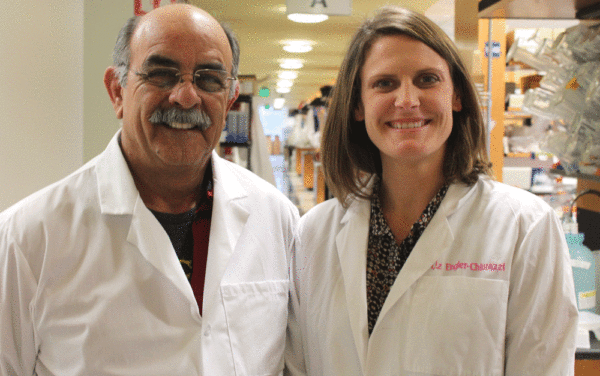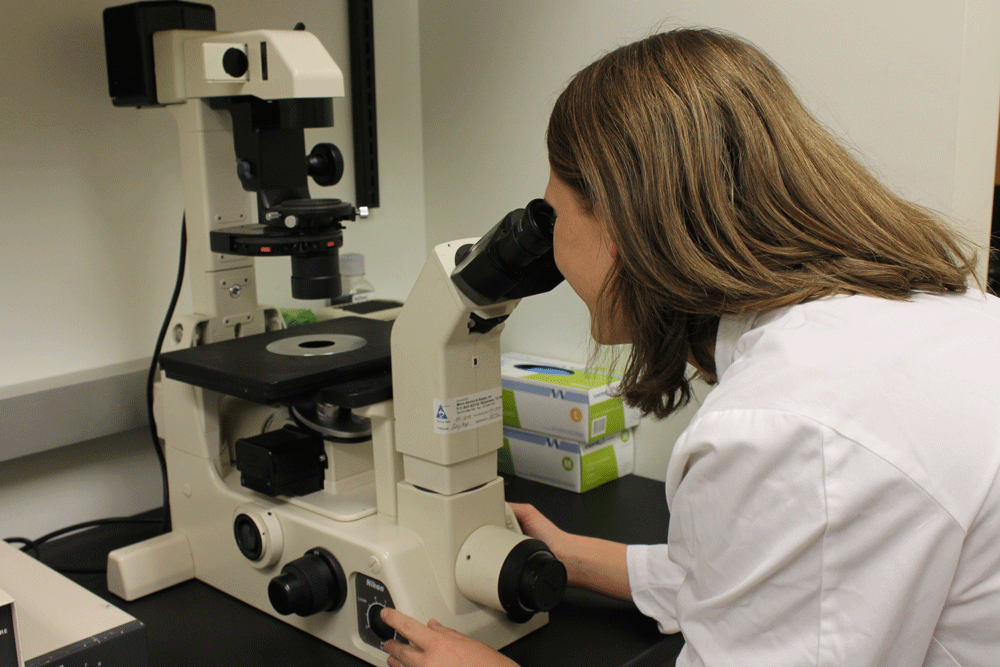By Dr. James W. Simpkins’ estimate, the doctors at Ruby Memorial Hospital are paged for new stroke victims around four or five times a day. “When you think about it, that’s over 1,400 times a year” says Dr. Simpkins.
His estimate is probably a good guess. He is, after all, the Director of the Center for Basic and Translational Stroke Research at the Blanchette Rockefeller Neuroscience Institute. He’s also the Highland Chair of Stroke/Neurology, and has a Ph.D in Physiology from Michigan State University. The BRNI, located adjacent to the Ruby Memorial and WVU’s Health Science’s Campus, brings to Morgantown nationally recognized talent and research along with hundreds of STEM related jobs.
“Our mission here is to address the unacceptably high rates of stroke in the state of West Virginia and the nation,” explains Dr. Simpkins. “The area where we spend most of our time is acute protection from brain damage during the stroke. We’re trying to find what is happening, how we can intervene and protect the brain during that critical period of an hour to twelve hours after the stroke. After that period, whatever damage happens, we can’t heal that. We can’t change it, we can’t reverse it, we can’t largely do anything.”
A stroke is a time-critical medical condition caused by reduced, blocked, or lack of flow of blood to the brain. Every minute after a stroke, says Simpkins, millions of brain cells die. “There’s a time limit to protect these brain cells. The sooner a patient can get help, the better the patient outcome because we can do things that keep the brain alive.”
West Virginia is “ground zero” for stroke research. The state regularly ranks among the worst offenders in stroke prevalence per capita. Part of the explanation for the state’s high rates can be attributed to poor diet and lack of exercise, but geography and infrastructure play a key role as well. Many West Virginians who live relatively close to a treatment center have to navigate windy mountain roads prior to receiving treatment. “Time is brain in stroke” summarizes Simpkins, who also pointed out that Morgantown’s game day traffic is especially problematic for stroke victims coming to Ruby Memorial for treatment.
One of the center’s recent contributions to the medical community was evidence that a bacterial infection may raise the chance of someone having a stroke. While many neurologists anecdotally understood that flu season annually brings a spike in the stroke rate, local researchers were able to establish a causal link between the two. From their 2015 article published in Behavioral and Brain Functions:
“We demonstrate for the first time that an infection, present at the time of brain trauma… can exacerbate detrimental stroke outcomes, negatively impacting health and significantly prolonging recovery… Our observations of the association between infection, stroke, and worse sickness and neurological outcomes argues for the need to aggressively treat infection in people with risk factors for stroke and the need to understand the mechanism(s) of this association.” [1]
Dr. Elizabeth Engler-Churazzi, Ph.D, one of the researchers under Dr. Simpkins who contributed to this study, shared that the center is conducting research around the clock. Staff routinely work all shifts to make sure time sensitive experiments and research are thoroughly vetted for the medical community. “We all work very hard, many hours a day. We solve some tough, tough problems. We’re finding the solutions that are going to help the next person who has a stroke. If we can make some contribution to the pain people experience, or if we can help their families care for stroke victims, all that effort is worth it. The time we spend away from our families gets payed back ten-fold. Every article we publish chisels away at this problem one step at a time.”

For readers who are interested in the team’s stroke research, or are eager to learn more about West Virginia’s stroke epidemic, Simpkins will be part of a public presentation on the subject in March. This “mini medical school” is intended for the public to learn the basics of stroke treatment and research. Stay tuned to Zackquill for a followup date, time, and location.
See also: Morgantown’s Arial Emergency Room, an interview with the team that operates the region’s helicopter ambulance service.
[1] Danielle N. Doll, Elizabeth B. Engler‑Chiurazzi, Sara E. Lewis, Heng Hu, Ashley E. Kerr, Xuefang Ren and James W. Simpkins. Lipopolysaccharide exacerbates infarct size and results in worsened post‑stroke behavioral outcomes. In Behavioral and Brain Functions (2015 11:31). PDF provided by co-author Engler-Chiurazzi. Reproduced under Creative Commons License 4.0. Some portions of text omitted for clarity.

